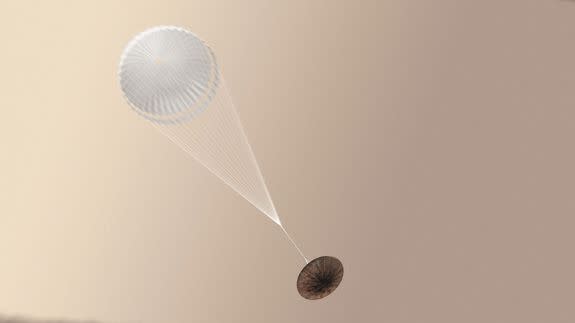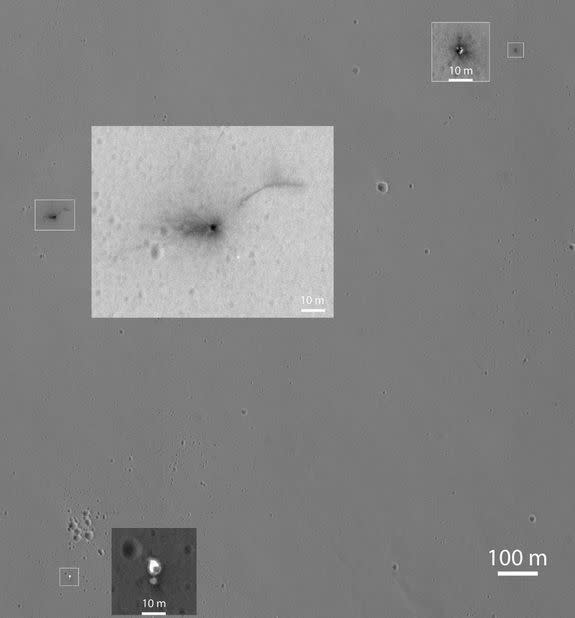Yep, Europe's Mars lander definitely crashed into the red planet

Poor little Schiaparelli.
A new image beamed home by NASA's powerful Mars Reconnaissance Orbiter (MRO) at the red planet shows that the European Space Agency's Schiaparelli lander did indeed crash hard into the world during its attempted landing on Oct. 19.
The MRO took a photo of Schiaparelli last week, revealing the site of the crater, but the new high-resolution photo shows more of the details of the crash site and its surroundings.
SEE ALSO: Europe's Mars lander is lost on the red planet
The photos show a new, dark patch on the Martian surface that scientists think is the 15 by 40 meter crater left behind when Schiaparelli slammed into the planet after its engines unexpectedly shut off early, leaving it to free-fall and impact at high speed.
"About 0.8 mile (1.4 kilometers) south of the lander impact site, two features side-by-side are interpreted as the spacecraft's parachute and the back shell to which the parachute was attached," NASA said in a statement.

Image: ESA-ATG medialab
Landing things on Mars isn't simple. NASA is the only space agency that has successfully landed and operated landers and rovers on the red planet. In total, seven of the agency's missions to the surface of Mars have succeeded.
Schiaparelli was designed as a technology demonstration to help prove out the kinds of landing and descent systems needed to bring heavier payloads down to the surface of Mars in the future. According to mission managers, in spite of the landing's failure, the lander still provided good data about what needs to be done differently next time.

Image: NASA/JPL-Caltech/Univ. of Arizona
The lander was part of ExoMars, a joint mission between the European Space Agency and Russia aimed at figuring out if life ever existed (or does still exist) on the red planet.
ExoMars' Trace Gas Orbiter made it to the red planet successfully the same day as the Schiaparelli's attempted landing. With the TGO successfully in orbit, the two space agencies now have a way of hunting for possible signs of life by sniffing out gases in the planet's thin atmosphere.
Russia and the European Space Agency plan to send another ExoMars mission to the red planet as early as the 2020s. That mission will involve a rover and landing platform that should dig beneath the surface of the planet to hunt for any life below.
